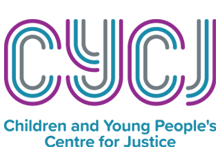Gillian Thomson, Justice of the Peace member of the Scottish Sentencing Council, talks us through the public consultation on Scotland’s first sentencing guideline, and why public awareness and understanding is so important.
Today (August 1) sees the launch of a public consultation on Scotland’s first sentencing guideline – the principles and purposes of sentencing – which will influence the way offenders are sentenced in our courts and enable us all to better understand how and why sentences are decided.
The Scottish Sentencing Council, which is made up of judicial, legal and lay members, was set up as an independent advisory body to promote consistency, fairness and transparency in sentencing across Scotland. As a member of the Council, but also as a member of the public and a Justice of the Peace who makes sentencing decisions every time I sit in Court, I welcome this transparent approach. The development of sentencing guidelines for judges is an essential part of the Council’s remit, but so too is the promotion of public awareness and understanding of sentencing.
To set the scene for all our future work, our starting point is this first draft guideline on the overarching principles and purposes of sentencing for all offences, and we want to hear your views.
Why do we think the underlying principles and purposes need to be defined? We take an evidence based approach to all our work and the evidence shows many differing views on what the principles and purposes are, but little agreement. Certainly some guidance exists in the form of court decisions in particular cases, but this is the first time that a comprehensive definition has been provided for the principles underlying sentencing decisions and the purposes they seek to achieve.
We believe that to have these defined at a high level will increase transparency and promote consistency in sentencing. We have carried out significant background research, consulting widely with judges across Scotland, considering views and approaches in a range of jurisdictions, and engaging with interested organisations.
The draft guideline, we believe, captures the critical elements relevant to all sentencing decisions. We considered creating an exhaustive list, but did not think it practical or useful. Instead, we have adopted a framework of the core principle of ‘fairness and proportionality’ from which a range of supporting principles flow.
In plain English, some of these are:
- similar offences should be treated in a similar manner
- sentences should be no more severe than necessary
- reasons for sentencing decisions should be stated clearly and openly.
Another aspect of the consultation is to ask people to consider what the purposes of sentencing are, for example:
- punishment
- reduction of crime (including through rehabilitation)
- giving offenders an opportunity to make amends.
We are looking for comment on both the content of the draft guideline and on how easy it is to understand. Although designed to assist judges, our intention is that it should also help the public better understand how sentences are decided.
I would strongly urge you to take this opportunity to participate in the public consultation available on our website by the deadline of noon on Friday, October 27.
We have started work on further topics and, as new guidelines are developed, we will continue this open and transparent approach, engaging with the judiciary, the public and interested organisations through consultation. Our intended next steps are outlined on our website but, in brief, we are currently working on guidelines on the sentencing process – which will include the steps taken by judges and the different factors taken into account when they decide a sentence – and on the sentencing of young people. The first offence-specific guidelines, as announced in our Business Plan, will be on death by driving, and wildlife & environmental crime. However, we have a long term perspective, so we are open to, and welcome, your views on other guideline topics for the future.
For more information about sentencing matters, see our About Sentencing web pages which include videos and an interactive scenario that lets people choose what happens next in a realistic court case, and then select the sentence they would give – if they were the judge.
Pictured: Gillian Thomson

Leave a Reply
You must be logged in to post a comment.